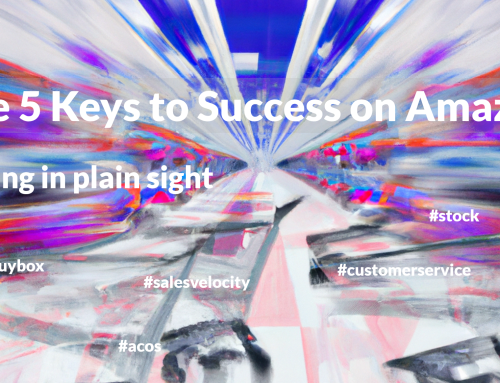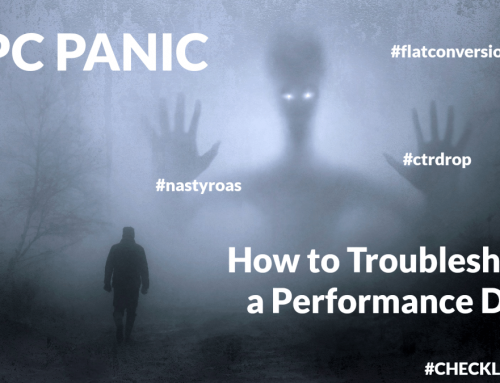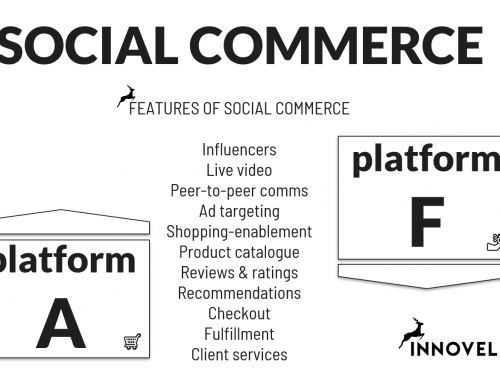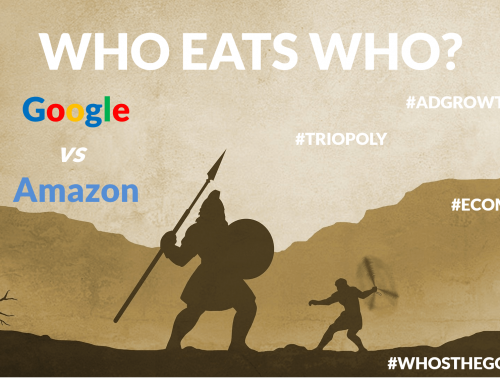I think I’ve become somewhat addicted to the Amazon DSP reporting interface over my two years of setting up a Europe-wide DSP seat with Amazon and managing the ramp up. It is pretty cool and has so many options for looking at the data from every imaginable angle. I certainly spent a lot of hours with it.
But the Amazon DSP platform is a mystery to many. Whereas everybody has access to the Amazon Sponsored Ads platform by default: Every seller, every vendor on Amazon, and all the agencies working for them, access to the DSP is gated. Only agencies with a “seat” and Amazon teams delivering « managed services », have access to the tool. Getting the seat requires a capable team in place and a commercial engagement on a minimum level of spend in the platform, and those stakes are getting higher.
But in these days of AI empowerment, why not simply ask ChatGPT, OpenAI’s generative AI chatbot to explain difference between Amazon PPC and Amazon DSP »?
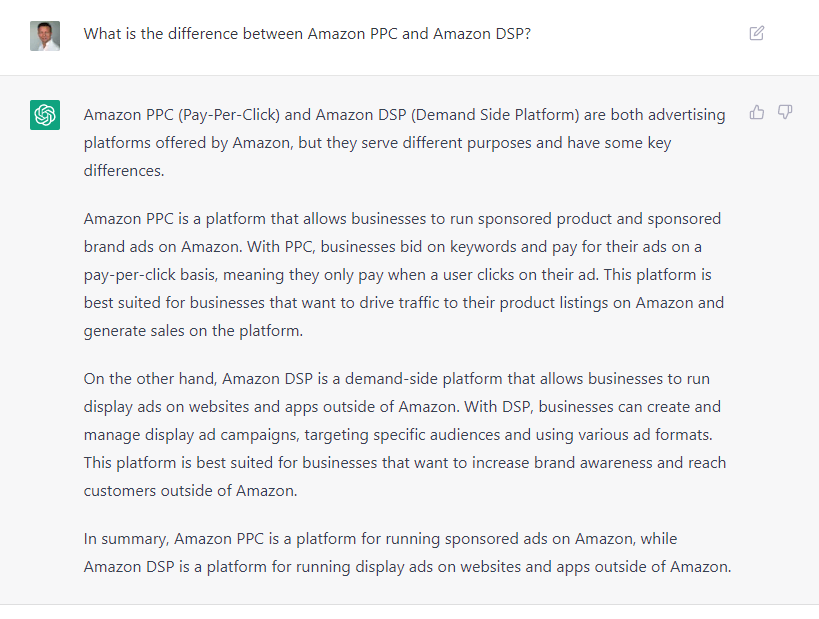
Oh, I am a big fan of ChatGPT, but the answer regarding Amazon DSP is actually pretty far from reality. Maybe the reason for this is that there is not much public information available about the Amazon DSP on the internet. There are probably more people talking about it, who have never actually worked with it, than specialists with an in-depth understanding. Additionally, it is a relatively new and exclusive tool and the chatbot has only been fed data up until 2021. An AI can run really fast, but if you feed it with incomplete or wrongful data, it is not going to correct or improve that. It works by the SISO principle.

Without getting too much into why ChatGPT is wrong, let’s instead look at the two points on which I can’t agree in the description:
- Amazon DSP Inventory is outside of Amazon
- The purpose of DSP campaigns is to build brand awareness
Amazon DSP inventory is both inside and outside the marketplaces
Amazon is on a path to conquer more digital advertising budgets. It has a superpower compared to its competitors Meta and Google in the fact that its “media” is growing. This is due to the strong growth of its ecommerce which has had a growth rate of 20-30% before a recent slow down to 8-9% in 2022. What it means for advertising is that its inventory is growing by at least that rate – actually, it’s been growing a bit over double the rate of ecommerce growth in recent years.
One of the big characteristics of the Amazon DSP is indeed its capability to reach outside of the Amazon marketplaces, but its main attraction as a DSP is actually to be able reach open ad exchange like any other DSP, and then also have exclusive access to Amazon marketplaces and Amazon-defined audiences.
The DSP works with 4 levels of inventory
- The marketplaces and marketplace apps
- Other owned and operated (O&O) inventory (ex: Twitch, IMDB)
- Partner publishers with priority-serving deals
- Open ad-exchanges and mobile exchanges
Video inventory will be outside of the marketplaces but all other campaigns will run on the inventory you choose. In a standard European set up, I have often seen around 75% of the inventory delivered on the market places, themselves. Those campaigns were heavy on the platform and could even be restricted to only apply within. The balance between external and internal inventory depends on the audiences you are targeting and the purpose of your campaigns.
The Purpose of a DSP campaign is not just visibility, it is to sell
At the end of the day, or perhaps the end of the financial quarter, any communication campaign an ecommerce player carries out has a sales purpose. It can be a short-term perspective or a long-term perspective but sales are still the end purpose for its advertising. One of the great reasons for the rise of retail media, is the fact that the advertising and the sale are part of the same loop. This means reporting sales related to advertising becomes much more reliable than in settings where the two happen on different platforms.
The Amazon DSP has the capability to reach outside of the user context that the Sponsored Ads platform (the other Amazon Ads platform, also referred to as Amazon PPC) will target. It can reach audiences that are a little further away from the purchase. It is of course nice to build brand awareness along the way, but it is much more compelling to qualify audiences that are likely to be interested in one’s products on Amazon. This is the strongest application I have found of the DSP in conjunction with Amazon PPC. Increase the reach of campaigns, touch people who are a bit further away from the sale and guide them towards the merchants offering.
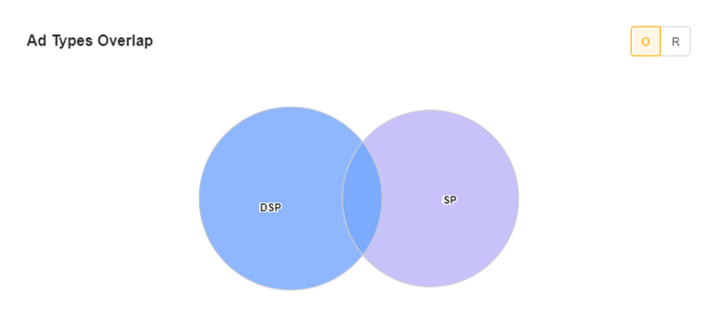
AMC reporting via Pacvue of overlapping DSP and Sponsored Products.
Source: E-Comas, 2022
As the Amazon DSP is integrated in the entire Amazon universe, it can play that role while maintaining the sales objective in place. Using it to build from the bottom of the funnel and towards higher levels, is one of the most efficient advertising tactics I have been confronted with across all digital advertising channels, and it would not be able to carry that function if its inventory were exclusively outside of Amazon and if its main purpose were to build brand awareness.
Let’s have a look at how performance driven DSP campaigns can be built below.
Media planning for Amazon DSP
The marketing funnel is such an outdated tool for understanding audience engagement and sales enablement, isn’t it? The problem is I’m just not capable of building media plans for performance without that model in mind. I think it is the concept of a hierarchy of decisions or influences a user moves through before a sale can happen. That speaks to behaviour in an online environment where touchpoints are measured and controlled.
Going through the inventory types mentioned above, I immediately qualify them on a scale of “far from conversion” to “close to conversion”. It’s the funnel waking up on me. Sending an Amazon product listing banner through an ad exchange out to some random site on the internet in order to match the right type of audience is bound to be a further fetch than showing the same ad inside the marketplace. So, we already have a hierarchy of inventory we can apply to the media plan. Inventory we expect to former better, and inventory we will test before keeping in the plan.
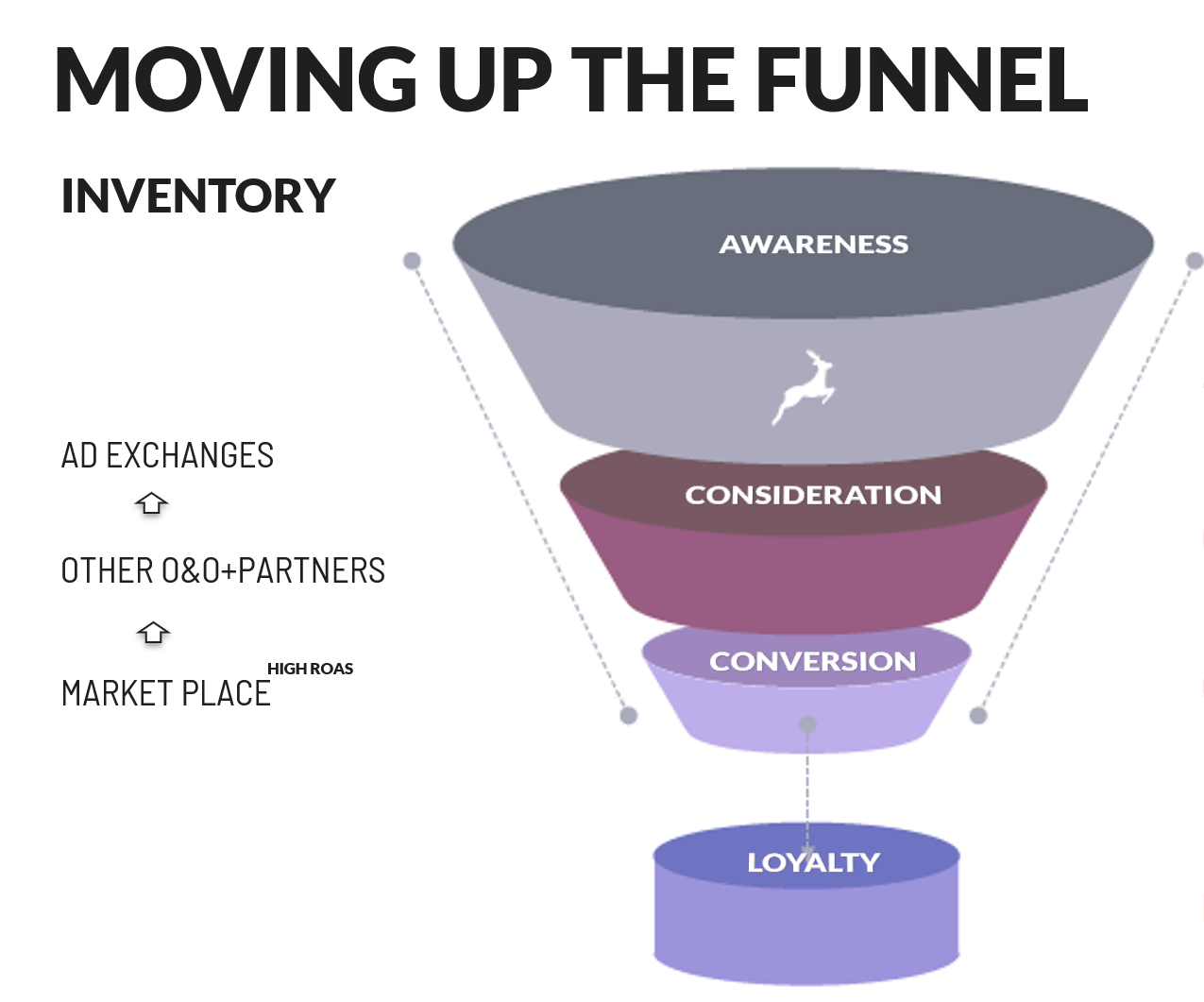
In my experience with Amazon DSP in the past years, there is a clear difference in direct performance between advertising inventory on the marketplaces themselves and inventory on other Owned & Operated sites, Partner publishers and ad exchanges. Reality is not as linear as shown in the illustration above, but the principle holds. In some cases, certain ad exchanges will perform better than partner publishers or other owned sites. This can depend on the type of product one is promoting and also on the audiences you are targeting on that inventory.
The same funnel-thinking applies to audience targeting. We know that users who have already bought the product, albeit a long time ago, are going to be an easier audience to convert to repurchase. This can be some of the easiest sales you make via your campaign but you always doubt whether these users would have bought the product anyway. That, however, is no reason for not using them as they help build audience data in the system, enabling us to find overlapping audiences which can open for more reach. But let’s put repurchase audiences a side for a moment.
The second-best performing audience type I have used is of course retargeting from product views. If a user has already been to the product detail page or performed a search for the brand or product, we know we are in the consideration phase already.
A little further away from the purchase, we will find users who have searched or visited pages for similar products. They are a bit further up the funnel, a bit further away from the purchase, just like any competitor audiences we are targeting. And finally, also in the consideration phase, we will find the best fitting inmarket audiences, machine-learning generated audiences Amazon has created based on user data and a prediction model for future purchase.
Only outside of these circles do we reach audiences that traditional advertising would target: lifestyle audiences and demographically defined audiences.
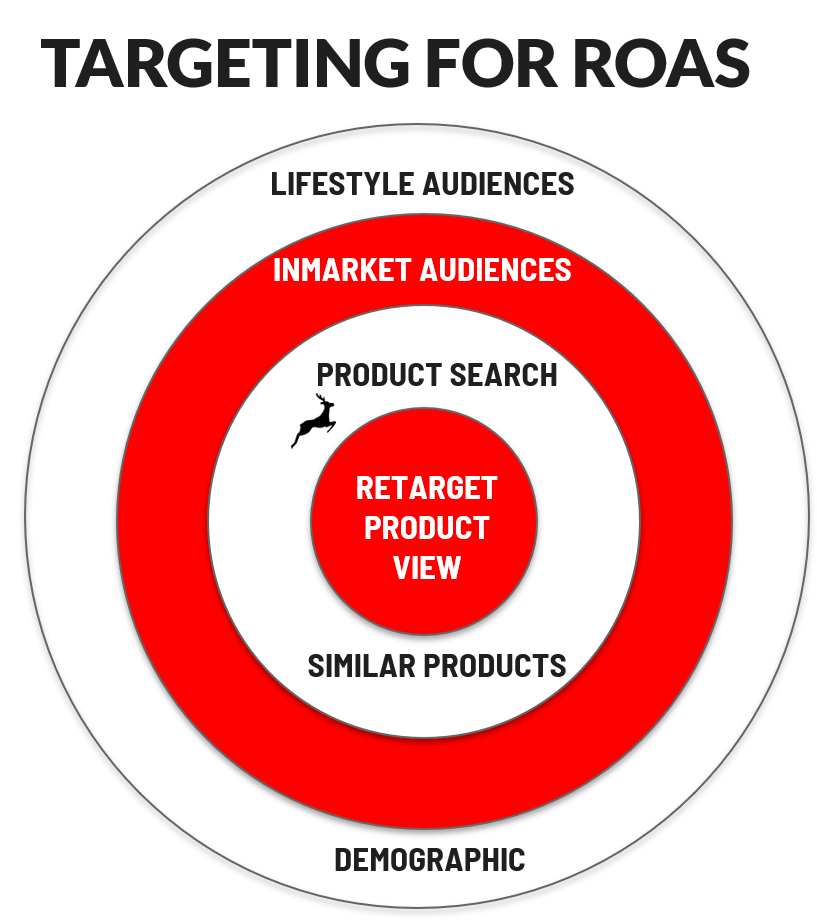
The stricter the retargeting, the higher the measurable ROAS – and the higher the risk you are converting the already converted, ie that you are simply tracking a conversion that would have happened anyway.
At the demographic and lifestyle audience level, we are very much in a higher-funnel brand-building exercise, but as we will see in the next section, even these branding efforts can be tied back to sales in a full-scale Amazon advertising operation. And inside a closed system, we can actually guarantee that we are reaching “New-to-brand” audiences by means of exclusions.
Two-phase Amazon DSP campaigns with a tROAS target
“We want to launch Amazon DSP to drive performance”. A classic client statement which is not always easy to work with. One should go on to Amazon DSP with nuanced expectations. The platform is good for reaching people and learning what works, but it can be a long ride and performance is rarely immediate. It is also a higher-volume platform where you can work through budgets very fast.
If the main drive for an Amazon DSP campaign is fast performance, the setup will be biased to retargeting and repurchases, and those are no guarantee that the advertiser will gain market share. They do serve a purpose, though, as they allow you to predefine efficient inventories and identify interesting overlap audiences when the campaign has been running for a while.
The most efficient set-up for exploiting both the conversion capability and reaching new audiences at scale, is probably what we have called the two-phase set-up. A two-phase DSP campaign consists of 2 mutually exclusive campaigns. One to reach audiences that have not been exposed to the brand and drive them to the product pages. And another to target users from the product pages to the conversion.
The platform itself is geared to this setup, as it can help optimize toward those objectives.
Phase 1 in the user journey DPV campaign: objective to generate visitors to product pages
Phase 2 in the user journey RTG campaign: objective to generate conversions
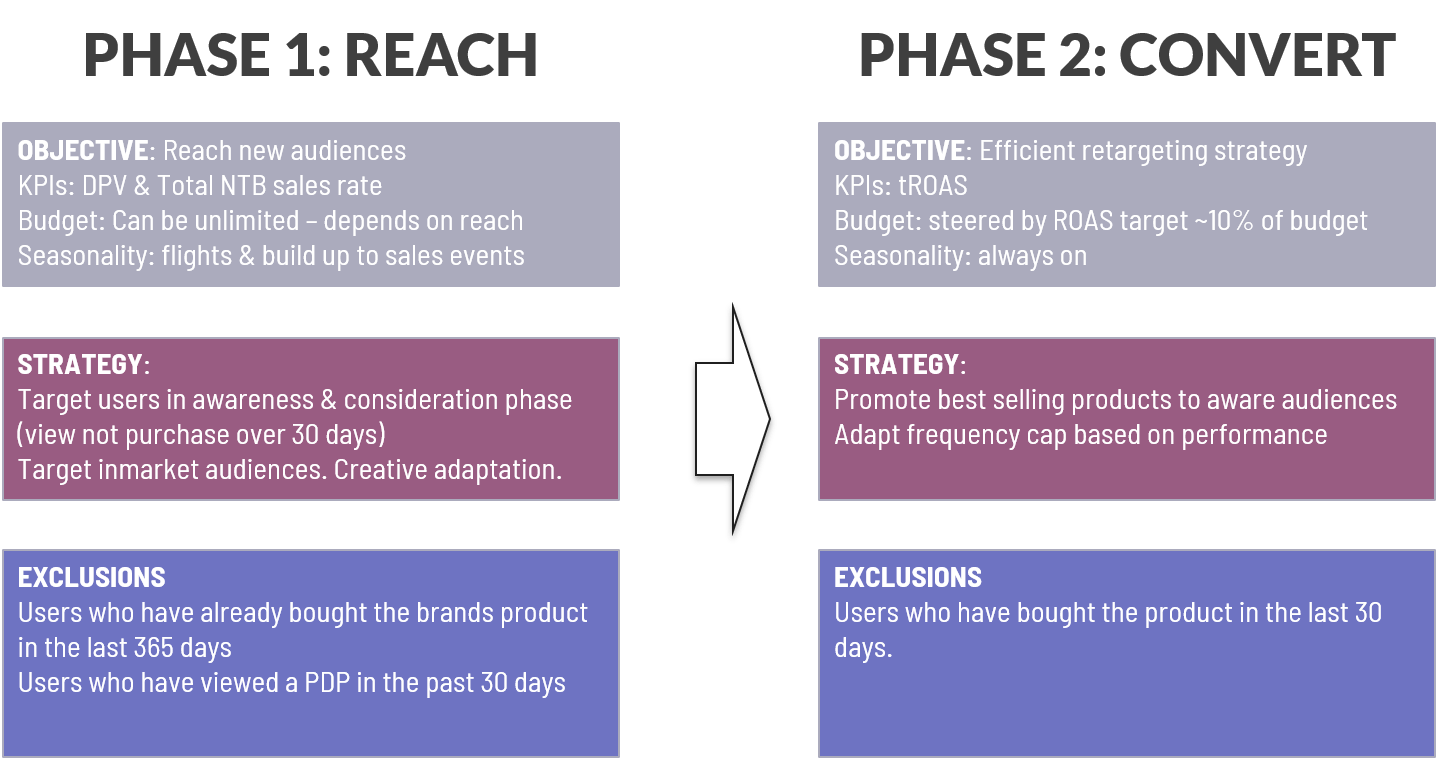
In the two campaigns we are actually targeting the same audiences, but in phase 1 we will exclude audiences which have been exposed to the brand. We can be sure they are “New-to-brand” (NTB). In phase 2, we will only target people who have searched for the product or been to the product pages, and of course, we will exclude users who have purchased the product during the last 30 days (or whatever time frame corresponds to the duration of a product).
One essential thing to keep in mind when running a two-phase campaign like the one described here, is to only consider return on ad spend at the account level. The Phase 1 campaign will have a low ROAS and its target KPI is the DPV rate: the rate at which ads are generating visits to the detailed product pages. It can also generate sales directly, but that function is actually reserved to the Phase 2 campaign which is geared to conversion. A successful campaign is not aiming to generate the best possible ROAS. It is aiming to generate the highest possible revenue at an acceptable ROAS. This guarantees account growth, and, yes, we are getting to it: it actually builds the brand recognition within the Amazon universe. Over time brand searches will increase and perhaps sales velocity too. These are the ingredients for an additional boost in organic sales which you can measure via the Total ROAS of the account (total sales/ad spend).
Amazon DSP is for non-obvious sales
The Amazon DSP is really good at reaching audiences that didn’t already have your products on their mind and drive them on a path to purchase. Perhaps that is what building brand awareness should actually mean: activate sales for audiences that didn’t know the brand before. With what we have called a two-phase setup, you can use the Amazon DSP to do just that. Build sales-enabling brand awareness to new audiences, and you can monitor and improve you process as you go.


